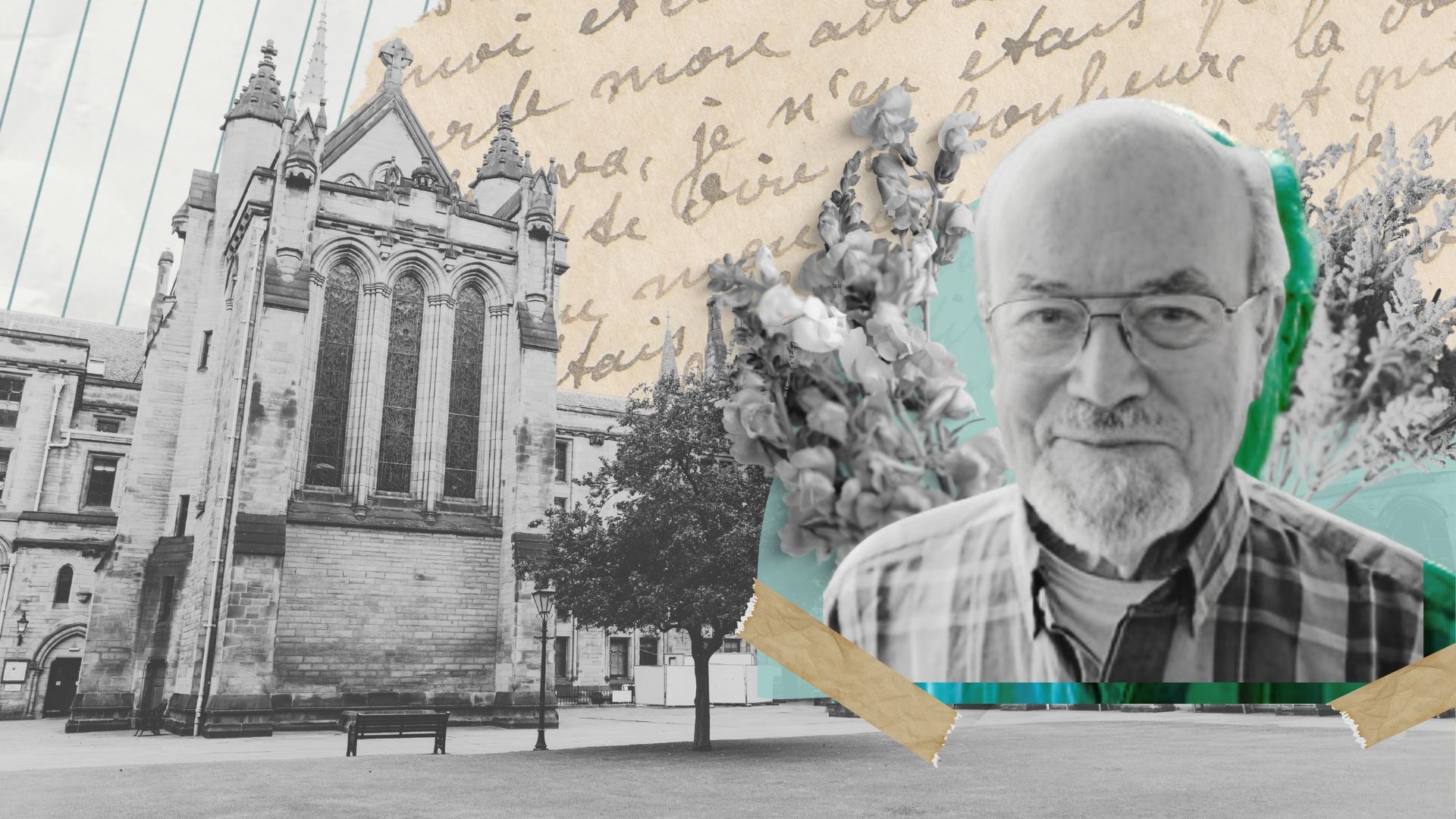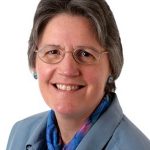Tom Houston was one of the most highly-gifted leaders of his generation. In July 1989 he became the fourth International Director of what was still then known as the Lausanne Committee for World Evangelization. These were testing, indeed precarious, times for Lausanne, as you will see below.
He was a man of prayer. Teaching the Bible, and helping people to relate it to their lives, were core to his whole ministry.
Childhood
Tom grew up in the town of Dumbarton, on the Clyde, as an only child, raised by his mother. Sadly, his parents’ marriage didn’t last, and Tom’s father, a young Bible college student, left when Tom was 14 months old. Tom learned Bible stories from his mother, and it was clear from early on that he had a spiritual sensitivity as well as remarkable intellectual gifts.[1]
At a Saturday night meeting at church, the speaker told of a girl aged eight who had wanted her father to make her a cross. Tom was already nine, and she had got there first! ‘So competitive Houston became a Christian that day’, he recalled, just a few weeks before he died. Up to then, church had been boring, but soon afterwards he was given a wallet and a notebook, and he started to take notes during the sermon. He was serious about his faith, and when, two years later, he heard a talk on tithing, he immediately turned an Elastoplast tin into his bank, so he could track his own giving.
In his first year at Dumbarton Grammar School, Tom won ten first prizes. In his final year, as a senior prefect, he decided to revive an old school tradition of the sixth form going away for a day, but the headmaster declined to give permission. Houston, unperturbed, took them out of school anyway. Returning to school the following day, after their walk up Ben Lomond, the daring sixth formers received no comment at all about their absence, from the headmaster, or any teacher! A shrewd response.
Tom was Dux (highest achiever) of his school, winning a £10 award. It would be spent two years later (see below). He went on to Glasgow University to read Classics.

Marriage to Hazle Findlay
Throughout his teens, Tom was highly involved in Glasgow Youth for Christ, and it was through YFC that he met his wife, Hazle Findlay, from Greenock. He would cycle up the Clyde, take his bike over on the ferry, then cycle the longer side, down to Greenock, to visit Hazle. She had already become well known in YFC as a pianist and singer.
Throughout Tom’s ministry, Hazle exercised a great gift of hospitality. Their home was always open and they shared a passion for evangelism, and for Bible teaching. Hazle travelled with Tom to many countries, ministering to women, and speaking to women’s Christian Viewpoint groups.
Hazle died in September 2009 after a long illness. At the thanksgiving service for her life, warm tributes were expressed by old friends from a range of places. Perhaps uncomfortable with such praise, Tom, true to his Scottish culture of modesty, said at the close of the service: ‘to our family, understatement is a value’. Then he added movingly, his voice almost breaking, that he had been reminded by his grandson ‘but you must never understate the grace of God’. He said that in the last year of Hazle’s life, they had never been happier, as they were happy in God.
Early Preaching Opportunities
Tom became known for his preaching gifts as a young man, and would be invited to preach at Baptist churches in the Glasgow area. For three successive years, he spent three months of his summer vacation at Saltcoats in North Ayrshire, running a children’s seaside mission, and often speaking from the sand pulpit. His £10 prize from school was spent on an accordion.
Having completed his MA, and now partway through a BD, he was appointed pastor of Johnstone Baptist Church from April 1951, aged just 23. During this time he was also teaching some Greek to undergraduates.
Tom’s next role, from January 1955, was as Chaplain of a large residential home in the Bridge of Weir. Here he ministered to some 500 deprived children, as well as 150 epileptic patients, and around 250 staff. He ran youth activities, working to get to know children individually, so he could help them build their character, and provide career counselling.
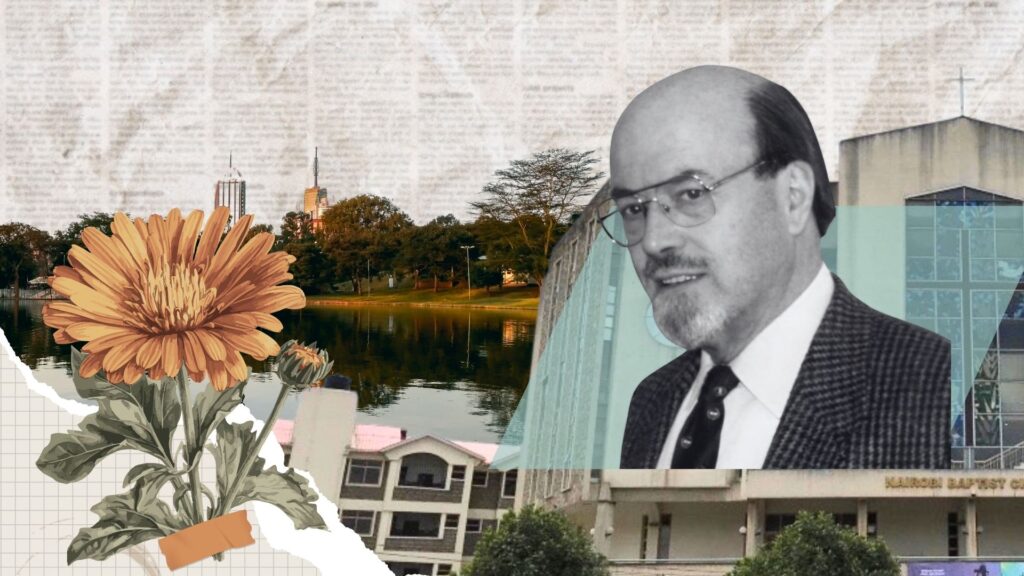
Nairobi Baptist Church
In 1959, aged 31, Tom was invited to be the first pastor of Nairobi Baptist Church. His 12 years in Kenya included much political upheaval— the Mau-Mau rebellion was largely quelled, but the country remained under British rule until 1964 when Jomo Kenyatta became its first Kenyan leader. Tom Houston always engaged the wider context in his preaching and teaching, working to grasp the sociological and political implications for his hearers.
This newly-founded church grew from 40 members to 1,000 members, drawing congregations of 1,500. His preaching was formidable, bringing scripture alive in trenchant ways, engaging the heart and the mind. In Nairobi he preached consecutively through a third of the Old Testament and two-thirds of the New Testament. As the congregation grew, it was clear that new buildings were needed. A new church, new hall and a kindergarten were built, all financed locally without funds from the West.
While in Nairobi, Hazle started a Bible study for the wives of oil executives, from Shell and other companies; and some lives were changed. She also started a choir among the poor and the prostitutes of Nairobi, and was much loved by them.
Tom was succeeded in 1971 by Gottfried Osei-Mensah.
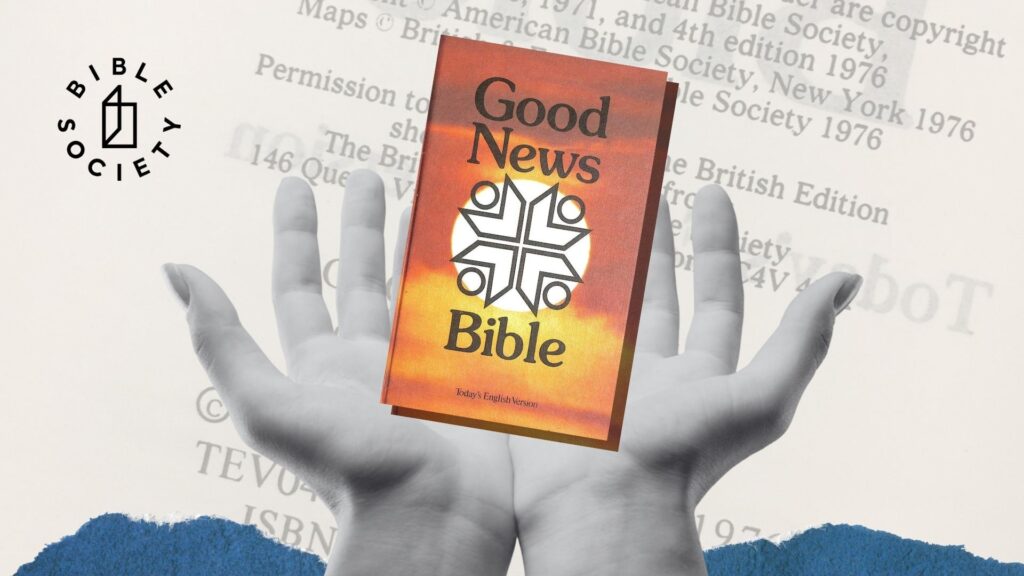
Bible Society
In 1971 the Houston family returned to the UK, and Tom began work as Communications Director with the then British and Foreign Bible Society. In 1976 he would become its director.
Tom introduced a department of Church Growth, a new idea at that stage in the UK. He also initiated price restructuring so that Bibles were no longer subsidised for sale in the UK. This released resources for needier places.
Under his leadership, the property in Victoria, central London, was sold and the Bible Society moved to Swindon, releasing funds for the worldwide ministry. At Tom’s invitation, Billy Graham was guest of honour at the dedication of the building on 26 February, 1982.
In 1976 Tom Houston managed the publication of the Good News Bible (British edition). It was to take the largest UK market share of Bibles by 1984. Tom was committed to clear communication without compromising good scholarship; and to ‘dynamic equivalence’ (or ‘functional equivalence’), which treated the meaning of the text, while being anchored in the original words. (The New Testament, Good News for Modern Man, had first appeared in 1966, an initiative of the American Bible Society.) This new translation—it was not a paraphrase—opened the original meaning of the text to massive new audiences.
Tom was convinced that the Good News Bible could be used for serious study, and so needed to be accompanied by a concordance. But Collins, who co-published the GNB, declined to co-publish the concordance, perhaps thinking that an equivalence translation which communicated meaning did not compute with a word-based concordance. So the Bible Society published it on its own. To overcome problems, the concordance cross-referenced major biblical words as they appeared in the Authorised (King James) Version. It also included a Thematic Index.
[The scholarly and technical work was led by David Robinson and L Jane Rowley, but Tom was undoubtedly the moving spirit behind the project.]
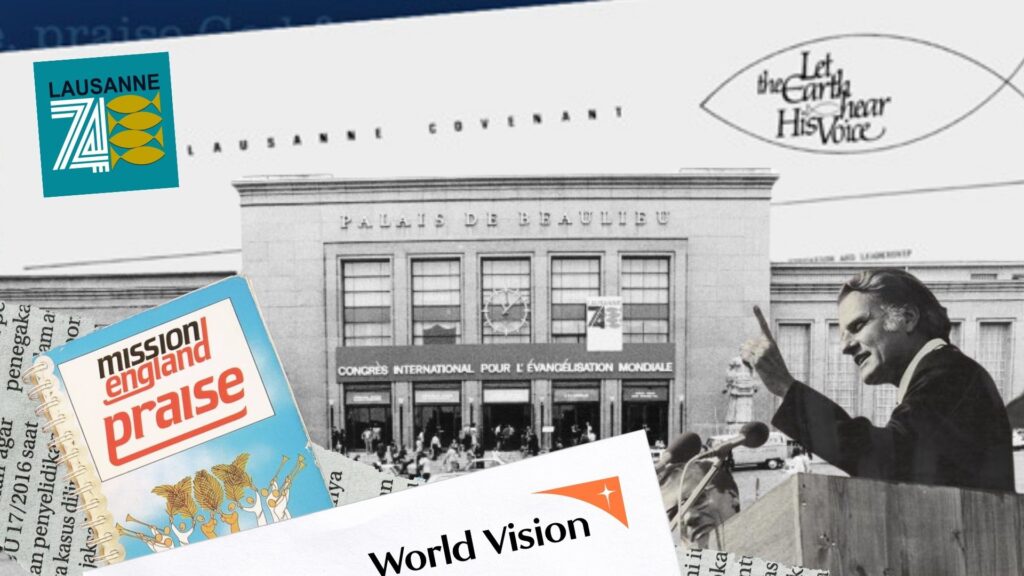
Billy Graham’s Visits to the UK
Tom Houston worked with Billy Graham on several occasions. In 1975, he had been responsible for the training of mini-group leaders for Eurofest 75; and in 1980 he was a speaker at the Consultation on World Evangelization held in Pattaya, Thailand. In 1983 he spoke at the International Conference for Itinerant Evangelists, in Amsterdam.
Tom was instrumental in issuing four invitations to Billy Graham to conduct missions in the UK: Blackpool 1982; Mission England 1984 (Bristol, Brimingham, Liverpool, Sunderland, Norwich and Ipswich); Sheffield 1985; Mission 89 to London (West Ham, Crystal Palace, Earls Court and Wembley); Mission Scotland 1991 (Edinburgh, Aberdeen and Glasgow).
He served as national chairman for Mission England from 1981-1983/4 when he moved to the US to work with World Vision. He edited the Mission England songbook, Mission Praise, which became widely-used in churches to the turn of the century.
According to the BGEA records: ‘In the years leading up to Mission England, Mr Graham corresponded with Tom Houston on multiple occasions, with Mr Graham expressing appreciation for Mr Houston’s insights into the spiritual state of the UK.’
World Vision
Until 1988, Tom was President (CEO) of World Vision, a global Relief and Development organization, based in Monrovia, greater Los Angeles. Tom had been a member of its International Board, and Chairman of World Vision Europe from 1978-1983.
As President, Tom Houston oversaw the work of World Vision, already active in 185 countries and territories. He and Hazle travelled widely to bring encouragement to staff and volunteers.
The American culture of World Vision was different from that of the Bible Society, with its British roots; and parts of it were not an easy fit for Tom. He was, as Doug Birdsall described him,[2] ‘a scholar and an analyst with a profound understanding of the world scene’; theologically reflective, and with a modest Scottish demeanour typical of his generation. He commanded great respect from donors and supporters.
His acceptance of the invitation to succeed Thomas Wang as International Director of Lausanne would be another massive shift, from being able to draw on staff and resources in well-organised Western structures, as with World Vision and the Bible Society, to leading a movement with minimal structure, almost wholly dependent on volunteers, across church denominations and parachurch organizations globally.
Lausanne Movement
For the 1974 Lausanne Congress, it was Tom Houston who chaired the participant selection committee for England. He was a plenary speaker at the Congress. In 1975 he joined the Executive Committee of the newly-formed LCWE (Lausanne Committee for World Evangelization, now the Lausanne Movement). Gottfried Osei-Mensah, who succeeded Tom in Nairobi, became its first International Director.
Tom served as the fourth International Director of the Movement from July 1989 up to his retirement in 1998, based in Pasadena, then in Oxford, UK. He was formally inducted to this role during the second Congress, Lausanne ll in Manila. Out of this Congress came The Manila Manifesto, with John Stott as its chief architect, which built on the historic Lausanne Covenant. Some 300 new strategic partnerships for evangelization were formed at Manila.
Manila 1989 proved historic in welcoming participants from the dissolving Soviet Union: the first time any large contingent of leaders from the old USSR was able to participate in a truly international gathering. As it took place so soon after Tiananmen, no Chinese participants were able to come.
The road leading to Manila had not been easy. The decision to hold the Congress there, rather than in Singapore where Tom’s predecessor, Thomas Wang, was based, was made very late, and on financial grounds. There had been difficulties, too, in a unified direction for Manila, as Thomas Wang wanted it to be a launchpad for a single focus on completing the evangelistic task globally by 2000. Lausanne leaders felt that the action-focused strategy of his ‘AD 2000’ dream was not consonant with Lausanne’s nature, as a theologically-reflective network of networks, listening, discerning, broader in scope, and reliant on God’s sovereignty.[3]
Tom Houston took over leadership with a debt to clear, and without resources for even minimal staffing. (See Birdsall, note 3.) It took courage and vision. Unbeknown to all in Manila, the world would change five months later with the collapse of the Berlin wall, and the opening up of Russia and her satellite countries. Much has been written on this. Tom convened a highly-effective Russia Consultation on Evangelization the following year to build on these new opportunities. He stepped down in 1993, taking on a new role as Lausanne’s first Minister-at-Large until 1998, with Fergus Macdonald as Chairman. He then again took a place on the Executive Committee, standing down in 2003, aged 75.
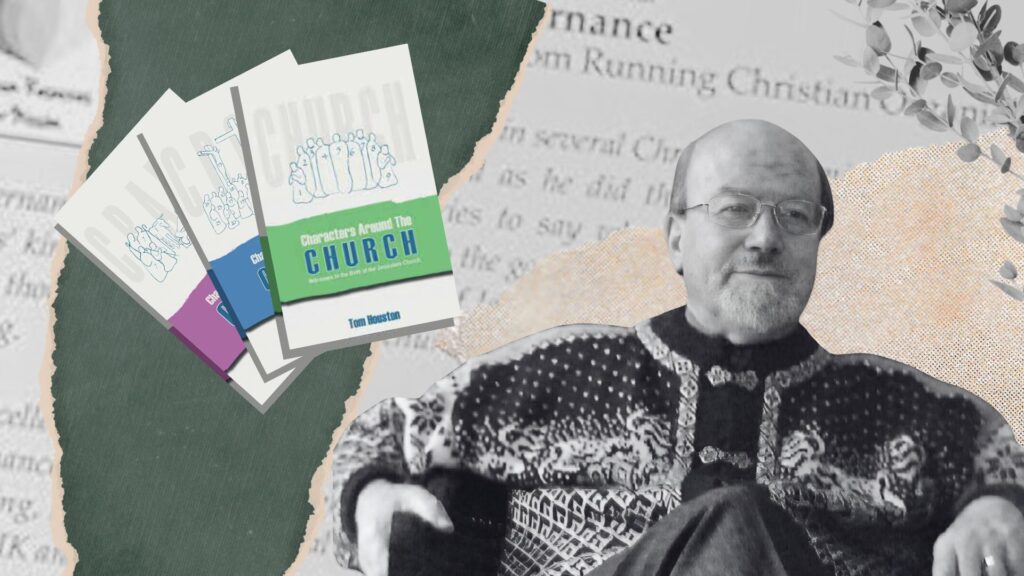
Tom Houston’s Books
Tom Houston’s books, which would merit new editions, enabled readers to encounter characters from the Bible in radical and fresh ways. His trilogy, Characters around the Cradle, Characters around the Cross, and Characters around the Church bring new insights into our reading of the New Testament. He had been much influenced in character study through reading Alexander Whyte’s sermons on Characters from the Old / New Testaments, and in old age would describe those volumes as his ‘most treasured’ books. (These sermons are now in print as a single volume.)
His final book, My Story with Governance, was published when he had reached the age of eighty-eight, still as alert, as spiritual and as insightful as ever. Here he walks through the meaning of leadership, and what can be learned from scripture on leading. Interestingly, as he points out, there is only one reference to ‘leaders’ in the New Testament, and that is to ‘the blind leading the blind’. God is ‘more interested in role than in rank’, he said. There are many, many references to leadership roles, like emperors, governors, teachers, overseers, shepherds . . . We should strive to serve in the role God has given; and not to want to ‘lead’ for the sake of seniority or rank. Tom held senior roles from his twenties onwards, but always with modesty, humility, and a desire to serve.
Retirement Roles
Tom stayed in active ministry for as long as he had the strength.
He was a Consultant Minister to City Temple, London (1992-1995).
In 1999 he was welcomed to the position of ‘Uncle’ at the Oxford Centre for Mission Studies. From 1991-2014 he held the role of Pastor Emeritus, Nairobi Baptist Church.
Even after Hazle died, Tom continued to welcome and entertain people to meals in his home, and to send news and reflections to a large mailing list.
There will most likely be doctorates on Tom Houston, and this writer hopes there will also be a serious missiological biography. God has given us much to learn from him (Hebrews 13:7).
Tom Houston died in Oxford on 4th June, aged 96. Tom and Hazle leave two children, two grandchildren, and three great grandchildren.
(With thanks to several former Lausanne leaders who have helped to provide information, including Doug Birdsall, Peter Brierley, Blair Carlson, Michael Cassidy, Leighton Ford, Fergus Macdonald.)
Endnotes
- His 2002 book ‘Characters around the Cradle’ bore the dedication: ‘To my mother, Mary Houston, whose support and self-sacrifice gave me a start in life and in Christian service that I value more than I can express.’
- See footnote 2.
- This is not for examination here. Doug Birdsall, successor from 2004 as Lausanne’s Executive Director, handles the story in detail in his doctoral thesis: ‘Conflict and Collaboration: A Narrative History and Analysis of the Interface Between the Lausanne Committee for World Evangelization and the World Evangelical Fellowship, the International Fellowship of Evangelical Mission Theologians, and the AD 2000 Movement’.
